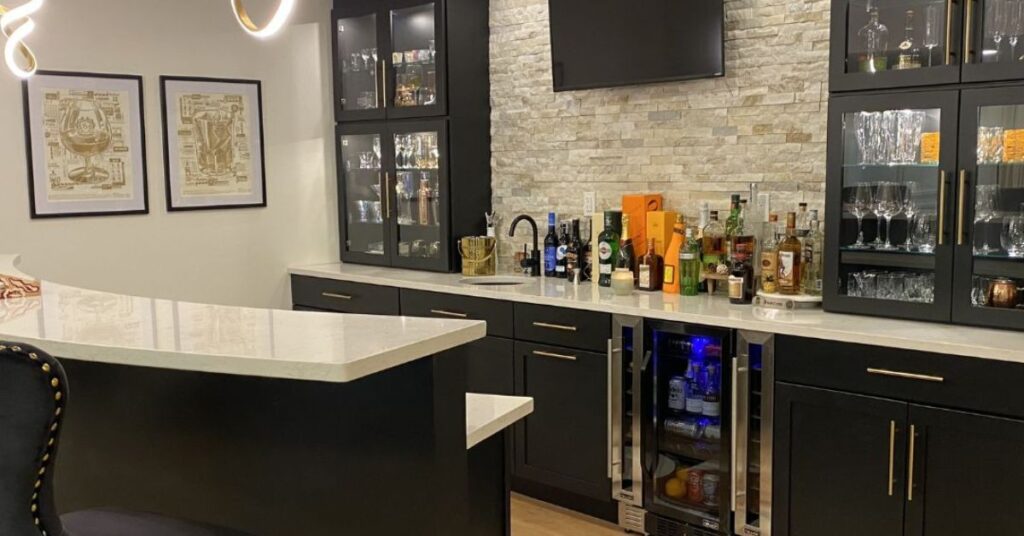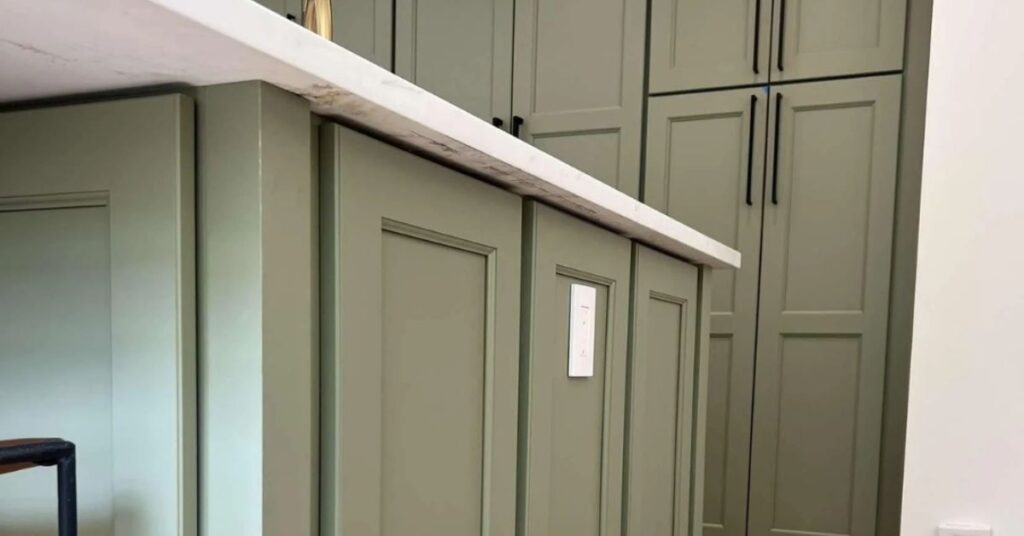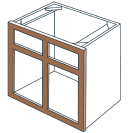A Complete Cabinet Size and Dimension Guide

Understanding cabinet sizes and dimensions is essential when designing or remodeling your kitchen or bathroom. Cabinets are the centerpieces of any space, striking a balance between aesthetics and functionality. Whether you’re exploring stock cabinets or customized options, knowing the standard sizes will allow you to create a layout that optimizes storage and fits perfectly within your available space. This article is your go-to guide on cabinet size and dimension. Follow along so you can approach your project confidently.
Kitchen Wall Cabinets Dimensions
Wall cabinets are mounted on the wall and sit above countertops, stoves, or sinks. These cabinets are primarily used for storing glassware, dishes, or spices. Standard heights for wall cabinets are 12, 15, 18, 24, 30, 36, and 42 inches. Depending on your kitchen’s structure, you might choose taller wall cabinets to reach the ceiling or shorter units to leave room for crown molding.
The depth of kitchen wall cabinets typically measures around 12 inches, ensuring they do not extend too far over the countertop. When it comes to width, options including 9, 12, 15, 18, 24, 30, 36, and up to 48 inches are common. Keep in mind that selecting the appropriate heights and widths depends on your kitchen’s overall layout and the people using the cabinets. Whether you opt for standard or framed cabinets, wall units should harmonize with your base cabinets.
Kitchen Base Cabinets Dimensions
Base cabinets form the foundation of your kitchen. Installed directly on the floor, these cabinets support countertops, appliances, and sinks. The standard height of base cabinets is 34 1/2 inches, which becomes 36 inches when paired with countertops. This measurement ensures a comfortable working height for most individuals. Customizations to adjust height are available for tasks or accessibility needs.
The depth of base cabinets is typically 24 inches, giving sufficient space for installing sinks or appliances while maintaining functionality. Wider depths can extend to 27 inches for additional space, though this usually applies to customized layouts. Widths for base cabinets vary widely, starting at 12 inches and scaling up to 48 inches in increments of 3 inches. Consider the placement of your sink and appliances while factoring in the widths to ensure an ergonomic setup.

Tall Cabinet Dimensions
Tall cabinets, also known as pantry cabinets, maximize vertical storage in your kitchen. These units are available in heights of 84, 90, or 96 inches, depending on the height of your ceiling and your overall storage needs. Tall cabinets provide an excellent storage solution for items such as brooms, pantry goods, or small appliances. These heights can be customized for floor-to-ceiling storage.
Tall cabinets are available in depths of 12 or 24 inches. Narrower depths are ideal for pantry storage, allowing items to remain visible and accessible. Wider depths at 24 inches are better for larger storage solutions. The width of tall cabinets ranges from 18 inches to 36 inches. To optimize accessibility, consider the neighboring cabinetry, and maintain symmetry within your layout.
Bathroom Vanity Cabinet Dimensions
Bathroom vanities provide storage space while also accommodating sinks and plumbing. Selecting the correct cabinet dimensions ensures convenience and complements the bathroom’s aesthetic. Standard heights for bathroom vanity cabinets are slightly shorter than their kitchen counterparts, measuring between 30 to 34 inches. Countertops and vessel sinks can significantly impact the overall height, so allow sufficient room for these additions.
Vanity cabinets typically have a shallower depth of 21 inches. Shallow depths are ideal for bathrooms since they maximize floor space without compromising storage. The width of bathroom vanities depends on individual needs and spatial constraints, typically ranging from 24 inches to 72 inches. Double sinks might require 60 to 72 inches, while smaller guest bathrooms might need widths as narrow as 24 inches for compact vanities.
Specialty Cabinet Dimensions
Specialty cabinets refer to units designed for unique purposes, such as corner cabinets, pull-out spice racks, or appliance garages. These cabinets are ideal for maximizing unused space and enhancing convenience in your kitchen. Corner cabinets, for example, come in two main types: diagonal and blind base cabinets. Diagonal corner cabinets often measure 24 inches by 24 inches, while blind base cabinets begin at 42 inches wide, offering a concealed storage area.
Pull-out spice racks are generally narrow. These range from 3 to 12 inches in width but can be customized to meet specific requirements. Appliance garages, on the other hand, ensure that kitchen gadgets remain hidden yet accessible. These cabinets typically conform to the height and depth of the countertop for a seamless transition.

Customizable Dimensions
While standard dimensions are suitable for most layouts, there are instances when customizable cabinets may better meet your specific design and functional needs. Customizable cabinets allow you to go beyond standard sizes. For example, if your kitchen has high ceilings, taller wall cabinets can extend storage vertically. Similarly, customized depths are often used for areas designed to house unique appliances or fit against awkward wall structures.
Width is another area where customizable solutions shine. Items like oversized cookware or specialty appliances might require cabinets wider than the standard 48 inches for base cabinets or 36 inches for tall units. By collaborating with manufacturers on customizable solutions, you can create a cohesive kitchen or bathroom design tailored to your preferences.
Considerations for Cabinet Dimensions
Selecting the right cabinet size requires balancing functionality, aesthetics, and the overall ergonomics of your space. Begin by assessing how you plan to use your space. For the kitchen, consider which items will be stored in each cabinet and whether you need any adjustments for accessibility.
Additionally, do not overlook ceiling heights and room dimensions for layout adjustments. The height and depth of your cabinets should take these factors into account. For instance, leaving space for overhead lighting or decorative elements is just as important as ensuring tall cabinets meet the ceiling for an integrated design.
Finally, every room’s layout poses unique challenges. For kitchens or bathrooms with odd dimensions, specialty or customized cabinets might be the best approach for seamless integration. Be sure to consult with professionals to ensure an accurate fit.
Understanding these specifications can go a long way toward ensuring that your project stays on track and delivers the style and functionality you envision. Use this complete cabinet size and dimension guide to inform your DIY endeavor, or work alongside an expert. The key lies in knowing your requirements and adhering to these universal cabinet dimensions.







